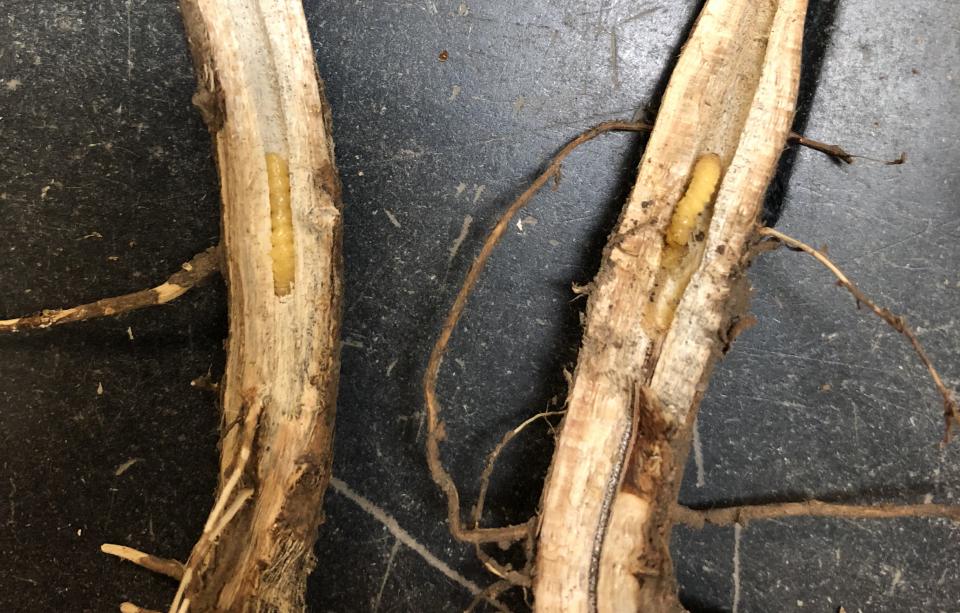
Robert Wright - Extension Entomologist | Justin McMechan - Crop Protection and Cropping Systems Specialist | Kyle Broderick - Coordinator of the UNL Plant and Pest Diagnostic Clinic
We have received several reports of stem breakage caused by Dectes stem borer in eastern Nebraska. In some cases, these fields were not previously known to be infested with Dectes beetles.
Dectes has been expanding its range in Nebraska soybeans. Most commonly it has been found damaging soybeans in south central Nebraska, but it has been expanding to the east, west, and north.
Dectes larvae burrow in the stem and by the end of the growing season are found at the base of the plant, where they overwinter. In preparation for overwintering, they hollow out a cavity at the base of the plant, which weakens the stem above the overwintering cell.
Harvest delays due to weather and now high winds have resulted in stem breakage in infested soybean fields. Lodging and stem breakage can also be caused by hail damage earlier in the season or plant pathogens such as stem canker, white mold, and brown stem rot. To confirm the presence of Dectes, check for a small, legless larva inside the base of the plant.
Fields with extensive stalk tunneling (greater than 50% of plants) by the soybean stem borer are most at risk for lodging and harvest losses, depending on weather conditions. If you're still in soybean harvest, prioritize fields with stem borer damage to minimize losses.
For more information see NebGuide G2082, Soybean Stem Borers in Nebraska.